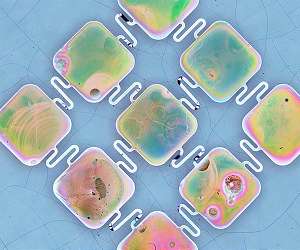Rocket Lab (Nasdaq: RKLB) has been selected by Ball Aerospace to manufacture the Solar Array Panel (SAP) to power NASA’s Global Lyman-Alpha Imager of Dynamic Exosphere (GLIDE) mission spacecraft planned to launch in 2025. GLIDE is a heliophysics mission intended to study variability in Earth’s atmosphere.
The SAP will utilize SolAero by Rocket Lab’s high-efficiency, radiation-hardened, quadruple-junction Z4J solar cells, laid down on carbon composite facesheet panels manufactured at the company’s facilities in Albuquerque, New Mexico.
The GLIDE spacecraft will launch with another Rocket Lab-powered spacecraft, also built by Ball Aerospace, the National Oceanic and Atmospheric Administration’s (NOAA’s) Space Weather Follow On-Lagrange 1 (SWFO-L1). SWFO-L1 is a heliophysics mission that will collect solar wind data and coronal imagery to meet NOAA’s operational requirements to monitor and forecast solar storm activity.
“Rocket Lab has become the ‘go-to’ provider of space solar power and space systems products throughout the space industry, including for ambitious heliophysics missions like GLIDE,” said Rocket Lab founder and CEO, Peter Beck. “I am grateful to our partners at Ball Aerospace for selecting Rocket Lab and excited to be working with them to support NASA’s Heliophysics missions to deliver advanced science.”
Rocket Lab has provided power to multiple spacecraft as part of NASA’s Heliophysics Division missions including the Parker Solar Probe, the first-ever mission to “touch” the Sun that launched in 2018, and the Magnetospheric Multiscale (MMS) mission, a robotic space mission to study Earth’s magnetosphere that launched in 2015.
Related Links
Rocket Lab
All About Solar Energy at SolarDaily.com
|
We need your help. The SpaceDaily news network continues to grow but revenues have never been harder to maintain. With the rise of Ad Blockers, and Facebook – our traditional revenue sources via quality network advertising continues to decline. And unlike so many other news sites, we don’t have a paywall – with those annoying usernames and passwords. Our news coverage takes time and effort to publish 365 days a year. If you find our news sites informative and useful then please consider becoming a regular supporter or for now make a one off contribution. |
||
|
SpaceDaily Contributor $5 Billed Once credit card or paypal |
SpaceDaily Monthly Supporter $5 Billed Monthly paypal only |
|

![]()
Sponge-like solar cells could be basis for better pacemakers
Chicago IL (SPX) Jun 10, 2022
Holes help make sponges and English muffins useful (and, in the case of the latter, delicious). Without holes, they wouldn’t be flexible enough to bend into small crevices, or to sop up the perfect amount of jam and butter.
In a new study, University of Chicago scientists find that holes can also improve technology, including medical devices. Published in Nature Materials, the paper describes an entirely new way to make a solar cell: by etching holes in the top layer to make it porous. The innovat … read more
